Anxiety is something that can a persons everyday life such as in work, relationships and social. Learn ways on how to manage and ease your anxiety correctly.
Do you worry all day about things that are out of your control or are unlikely to happen? Do you experience severe anxiety about things that other people don’t even seem to think about? Are you plagued by fears about what might happen or what could happen?
If so, you may have what’s called Generalized Anxiety Disorder (GAD), a condition that, according to the Anxiety and Depression Association of America (ADAA), affects 6.8 million adults every year. GAD is diagnosed when a person finds it difficult to control worry over money, health, work, family, or other everyday concerns. Along with excessive worry, other symptoms of GAD may include:
- Restlessness
- Difficulty concentrating
- Irritability
- Muscle tension
- Sleep disturbance
The level of anxiety associated with GAD ranges from mild to severe and varies from day to day and person to person. Certain circumstances may exacerbate symptoms of the disorder, but most people can function socially and live a purposeful life even when they’re experiencing mild anxiety.
At some point we all find ourselves faced with conditions and events that cause unease, apprehension, or angst. Not everyone who experiences anxiety will be diagnosed with GAD, but everyone can benefit from knowing how to reduce anxiety, wherever it came from.
At Alvarado Parkway Institute in San Diego, we’ve seen even the most fretful, anxious people learn to manage their anxiety and live wonderful lives by consistently using simple tips and strategies.
Take a look below at these helpful ways to ease your anxiety.
Breathe
Yes, it really works. Take a moment to close your eyes and inhale slowly. Then exhale slowly. Now do it again. Slow, deep breathing activates your body’s relaxation response so you can get out of fight-or-flight mode. And when you focus on the deepness of the breath and the slow pace of the inhale and exhale, you free your mind from anxious thoughts.
Count to ten slowly
Like breathing, slow counting allows you to pull focus from the thoughts that are making you anxious. Remember to breathe as you count. Try counting only one number per inhale and exhale. This will help you slow down and further relax.
Replace negative thoughts with positive ones
When you catch yourself thinking negative thoughts, try thinking their opposite. If you worry excessively about what might happen to your children, for example, consider what is actually happening in the moment (i.e. they are safe at school) and turn that into a positive replacement thought. For example, you can replace, “I’m afraid something bad will happen to my kids,” with “My children are safe in their classrooms at school.”
Practice acceptance
The first thing to accept is the anxiety itself. When you feel your anxiety begin to come on, trying to will it away could actually exacerbate it by making you even more tense. If you can gently recognize and accept your anxiety (rather than heaping it with more negative thoughts about yourself) you’ll be more likely to remember and use the tools and tips that help. And eventually, you’ll learn to accept circumstances and possibly prevent the anxiety from building up in the first place.
Learn your triggers
When you’re feeling anxious or worried, write in a journal and explore the possible triggers. Where were you and what were you doing when you felt the anxiety come on? If you don’t know, just keep writing whenever you’re feeling anxious. Eventually, you may begin to see patterns. If you can trace your negative thoughts back to the source, you can learn to replace them with the positive thoughts and affirmations that help you deflect worry rather inviting it in.
Avoid your worst triggers
There will be some triggers that you are not yet able to deflect with affirmations or positive thoughts. For instance, if the nightly news puts you in a state of constant fear, perhaps it’s best to avoid it. Similarly, if you have an intense fear of dogs that sends you into panic-mode when you see one off the leash, you may be better off avoiding dog parks, beaches where dogs are allowed, or even the homes of friends who have dogs – at least until you are better equipped with strategies for that particular trigger.
Seek help
An important part of managing an anxiety disorder is knowing when you require additional support. There will be times when breathing deeply or writing in your journal will be enough to help you relax and let go of the anxiety. But there will also be times when you need to reach out, call a friend on the phone or talk to a physician or therapist for professional help.
Alvarado Parkway Institute can help.
At Alvarado Parkway Institute, we offer a wide variety of programs in multiple locations in San Diego County for treatment of anxiety and other psychological disorders. Our doctors and therapists work together with patients and their families to create a treatment plan and develop strategies to manage symptoms and help our patients live healthy lives.
If you’re struggling with anxiety, contact us at Alvarado Parkway Institute in southern California and let’s get you on the road to recovery.

